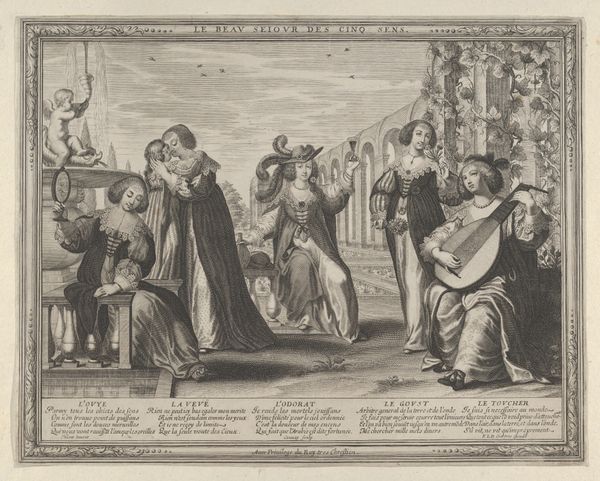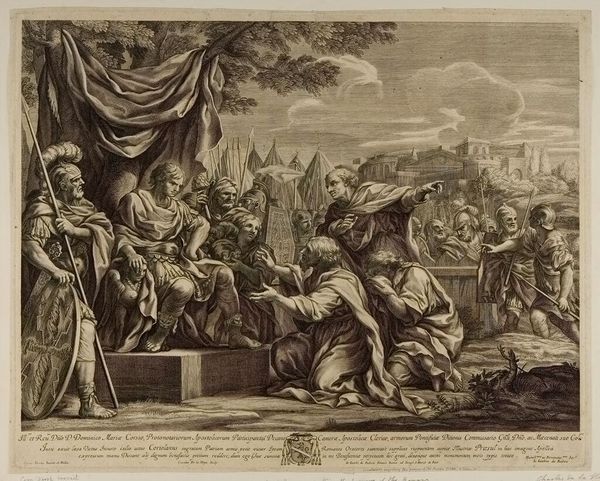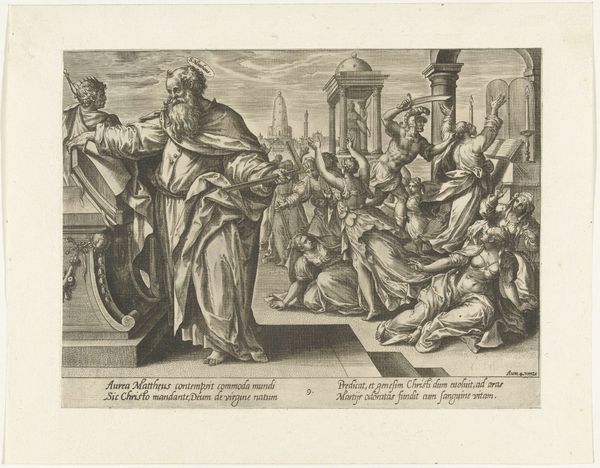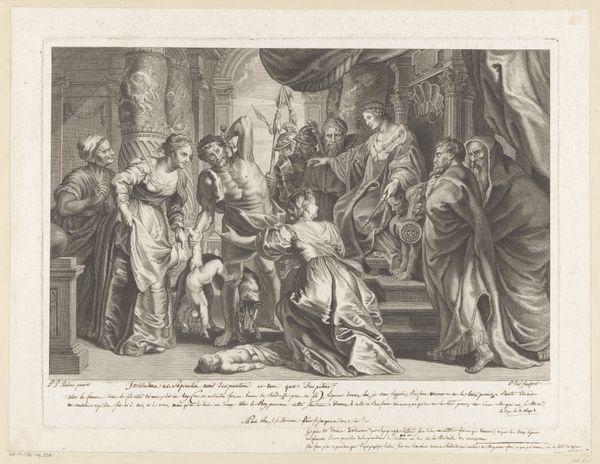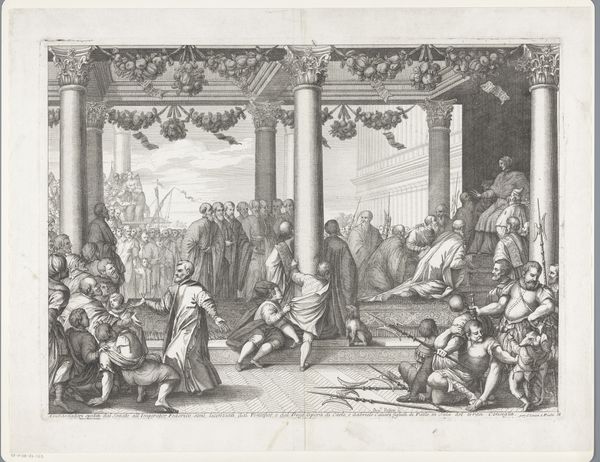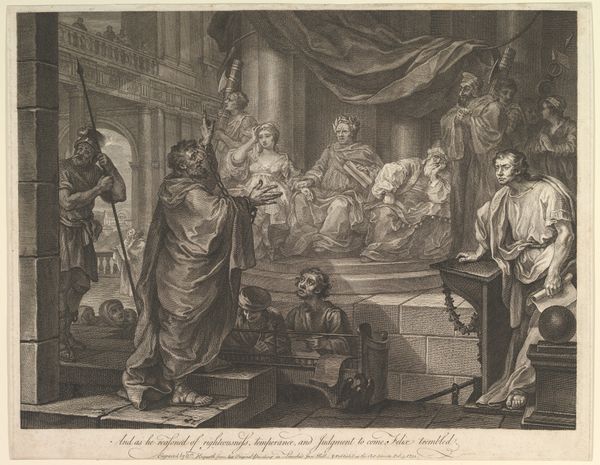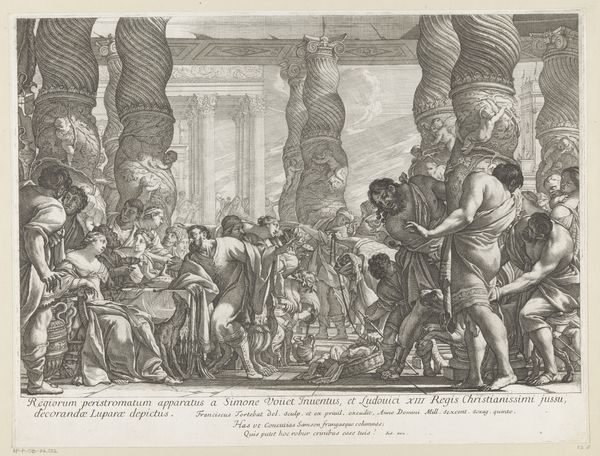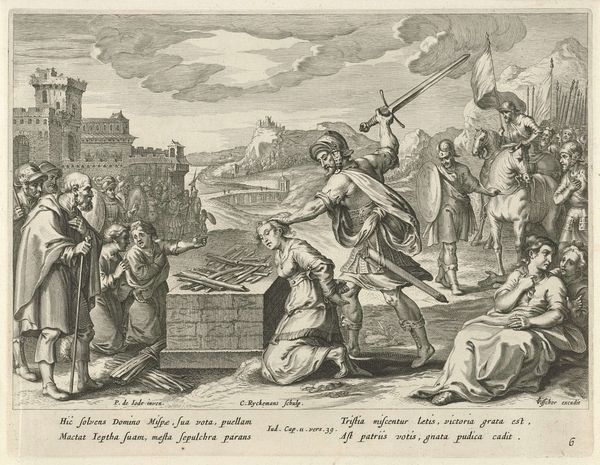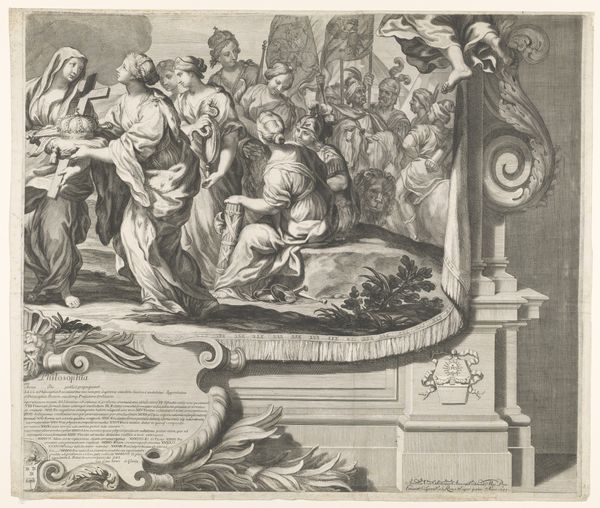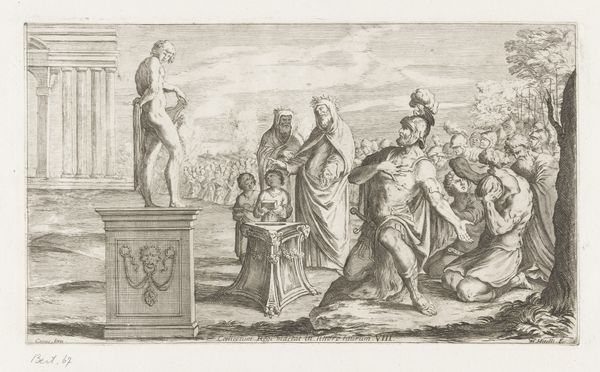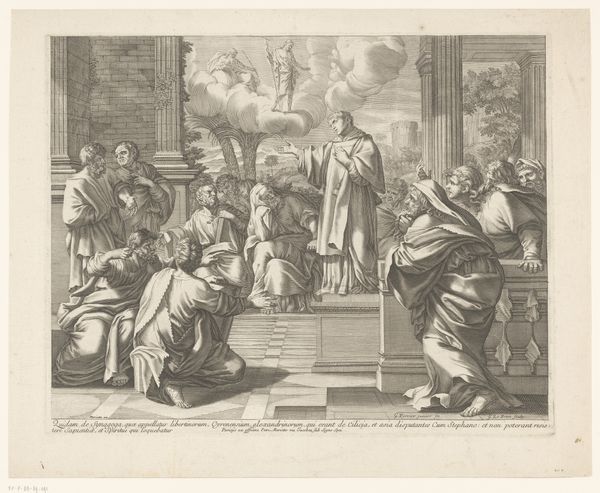
Coriolanus wijst de verzoeken van het Romeinse volk af 1651 - 1691
0:00
0:00
charlesdelahaye
Rijksmuseum
print, metal, etching, engraving
#
narrative-art
#
baroque
# print
#
metal
#
etching
#
figuration
#
history-painting
#
engraving
Dimensions: height 398 mm, width 501 mm
Copyright: Rijks Museum: Open Domain
Curator: Here we have "Coriolanus refusing the requests of the Roman people" by Charles de la Haye, dating sometime between 1651 and 1691. It’s currently held in the Rijksmuseum. Editor: My initial response is of organized tension; everything leads to and pushes against the centered figure. The sharp lines almost amplify a kind of forced restraint on everyone's part. Curator: It's Baroque, certainly, evident in the dramatic presentation and the abundance of detail crammed into a relatively small print. The use of engraving and etching enhances this detail, providing stark contrasts between light and shadow. Look how the artist uses those deep shadows to create a weighty atmosphere! Editor: Indeed. Consider the societal backdrop too; depictions such as these served specific purposes. During the Baroque period, rulers and institutions leveraged art to portray strength, virtue, and legitimate authority. The Coriolanus story itself, highlighting the complexities of power and the responsibilities of leaders to their people, offered opportunities for commentary and perhaps even thinly veiled criticisms depending on the political climate in which it was produced. Curator: Semiotically, the details all contribute to that story; Coriolanus's regality, the pleading gestures of the crowd... But note the structural tension in the very composition. He sits removed atop a dias, a figure made both powerful and unmoving. The artist subtly communicates this rigid division. Editor: Right, and one might consider how such an image could be perceived during an era defined by stark class divides and absolute monarchies. Was this meant to inspire loyalty or caution? Did it offer an unspoken challenge to those in authority who similarly ignored the needs of their populace? I see his pose is unmoved despite that their needs are so physically foregrounded. Curator: Perhaps it offered a reflection of current leadership failures, through a distanced historic portrayal. Editor: A potent mix of artifice and implied meaning indeed. Curator: Exactly, the formal elements lock and unlock historical contextualization in one moment. Editor: Definitely more than a straightforward representation. The political landscape offers much interpretation.
Comments
No comments
Be the first to comment and join the conversation on the ultimate creative platform.
